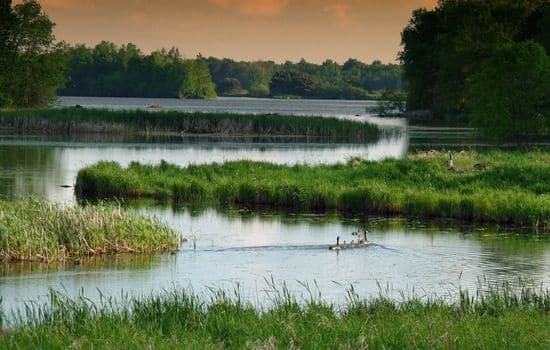Advertisements
Our topic today is about the Pantanal, considered a Natural Heritage Site and World Biosphere Reserve.
An extremely rich biome when it comes to Brazilian fauna, it is home to a large part of the animals that exist in Brazil.
Advertisements
Its environmental preservation is high, considered the best preserved in the country according to government agencies, such as the Brazilian Institute of Geography and Statistics.
SEE TOO
THE MOST BEAUTIFUL FORESTS IN THE WORLD
Advertisements
BEES AND THEIR ECOLOGICAL IMPORTANCE
THE FASCINATING WORLD OF SHARKS
General characteristics of the Pantanal
The Pantanal presents great integration of other ecosystems, and may have areas of occurrence such as tropical forests, the Cerrado, and the Caatinga.
Its trademark in Brazil is its flooded plain.
See Also:
Where is the Pantanal located?
It is located 35% in Mato Grosso and 65% in Mato Grosso do Sul.
Apart from parts in northern Paraguay and eastern Bolivia, this part is known as the Bolivian Chaco.
Pantanal soil
Much of it is a floodplain, a natural characteristic of the region.
This is great for fauna and flora, but it is harmful for agriculture.
Flooding impoverishes the soil, leading to the use of chemical fertilizers and pesticides.
Diverse vegetation of the Pantanal
Its vegetation is close to the Amazon Rainforest and the Cerrado, diversifying the Pantanal landscape.
With medium and large trees, typical of the Amazon, but with the presence of crooked trees, common in the Cerrado.
In the riparian forests, close to the rivers, we find 20-meter-high jenipapos, an Amazonian tree.
In this part the vegetation is dense and lush, with fig trees, inga trees, and tall trees.
In the flooded areas of the Pantanal there is typical vegetation such as aquatic plants: water hyacinth, yerba mate, bladderwort and cabomba, used for medicinal purposes.
In less flooded areas: ipês and buritis.
Climate
The region has a tropical climate, with two well-defined seasons: the rainy summer and the dry winter.
With rain from October to March, temperatures above 30 °C. Tourism is limited and fishing is prohibited due to fish reproduction.
The absence of rain occurs between April and September, and is marked by beautiful landscapes, attracting tourists, both Brazilian and foreign.
The Pantanal Relief
It has altitudes that do not exceed 120 meters. Therefore, 80% of the biome is flooded in the summer, a time of intense rain.
The most famous plateau is Urucum, in Mato Grosso do Sul, with a peak of 1065 meters above sea level.
Where one of the largest manganese reserves in Brazil is located, a mineral widely used in the steel industry.
The Hydrography of the Pantanal
Water in the Pantanal is crucial to the balance of fauna and flora. During the summer floods, 180 million liters of water are released.
This water forms: swamps, marshes, lagoons and bays that connect to rivers.
The most notable rivers are: Cuiabá, Taquari, Itiquira, Aquidauana, and the Paraguay River, one of the largest in the area.
The Fauna of the Pantanal
The fauna is extremely rich, with almost all the animals that live in Brazil.
Due to the direct influence of three large Brazilian biomes: Amazon rainforest, Cerrado and Atlantic Forest, in addition to having some areas with remnants of Caatinga.
According to IBGE, the Pantanal contains:
• 132 species of mammals: deer, tapir, jaguar, capybara and bat;
• 85 species of reptiles, alligators have the greatest variety;
• 463 species of birds: including toucans, macaws, jabiru and carão;
• 35 species of amphibians, with emphasis on the green frog;
• 263 species of fish, including pacu: pintado, catfish, traíra, dourado, piau and jaú, the largest in the region.
With all this wealth, the Pantanal is perishing due to illegal hunting and fishing.
Profitable activities in the Pantanal
The main activities are fishing, tourism and cattle farming in the state of Mato Grosso.
There are hotel-boat inns that accommodate tourists during the high season, which runs from June to September.
Local residents transform their boats into hotels and become guides for fishermen from all corners of Brazil and other countries.
Cattle farming can develop sustainably, generating employment and income.
The warning is for soybean cultivation in Mato Grosso, due to pesticides, which could unbalance the Pantanal ecosystem.
In tourism, the highlight is the chalana ride, a large flat-bottomed vessel, typical of this region and used to transport people along the rivers of the Pantanal.

Interesting facts about the Pantanal
• The Tuiuiú is the symbolic bird of the region.
• Considered the largest flooded plain in the world.
• The second largest snake in the world, the anaconda, is very common in the Pantanal region, measuring up to nine meters in length.
• Alligators are part of the Pantanal, however they only attack humans if they are threatened.
• November 12th is Pantanal Day, in memory of environmentalist Francisco Anselmo de Barros, an icon of environmental issues in the Pantanal.
What is UNESCO and what is its function?
UNESCO is the United Nations Educational, Scientific and Cultural Organization, headquartered in Paris.
She considers the Pantanal as a Natural Heritage Site and World Biosphere Reserve.
